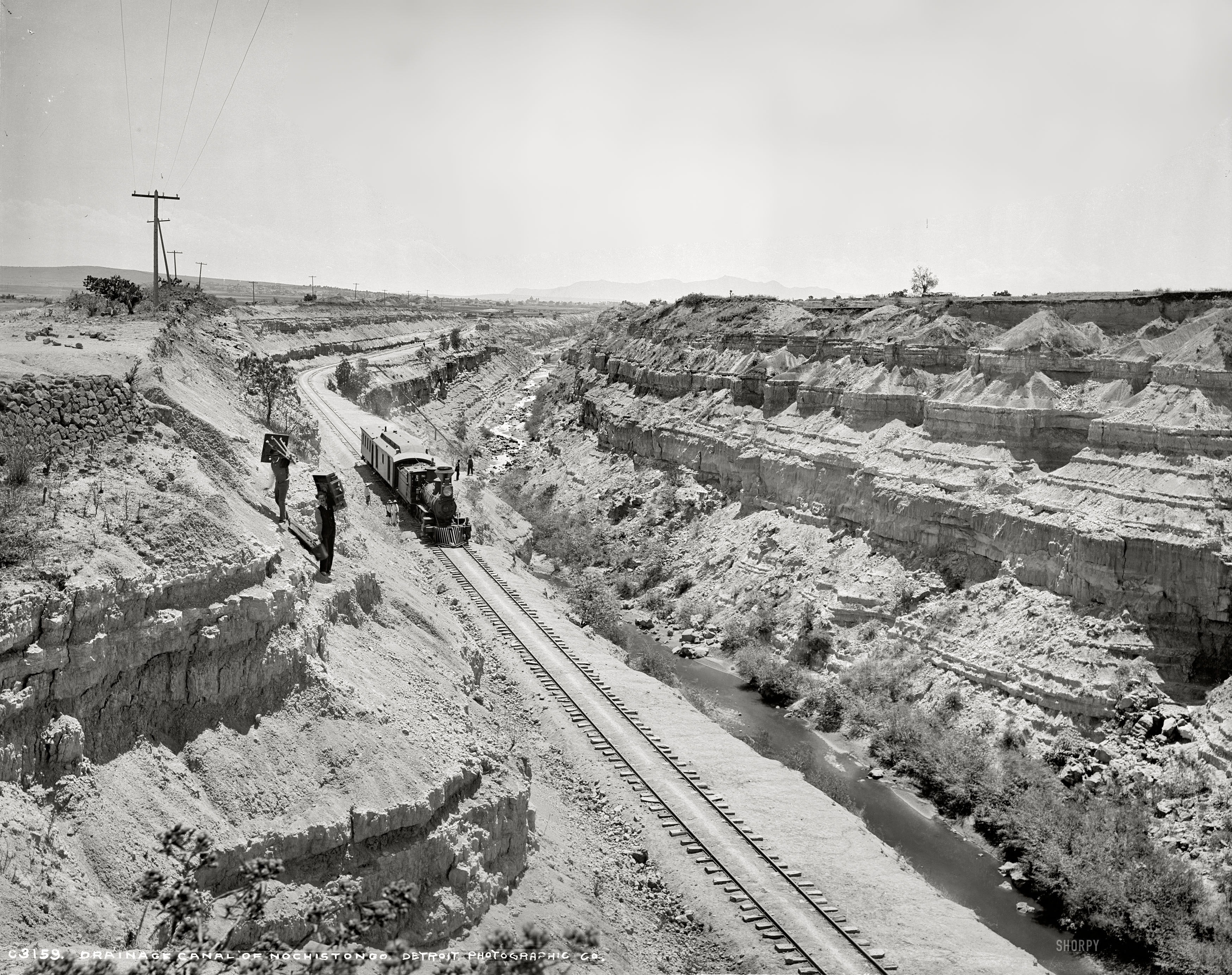
Mexico circa 1891. "Ferrocarill Central Mexicano. Canal of Nochistongo," a drainage excavated in the 17th and 18th centuries to keep Mexico City from flooding. Note the giant camera and tripod employed by William Henry Jackson in the making of his heroically proportioned photographs, the largest of which were recorded on a medium the archivists call "mammoth plates" -- glass negatives that measured 18 by 22 inches. (This particular image was made on an 8x10 inch glass plate -- what modern photographers would consider "large format," but still only a fifth the size of an 18x22.) Detroit Publishing Co. glass negative. | Click image for Comments. | Home | Browse All Photos